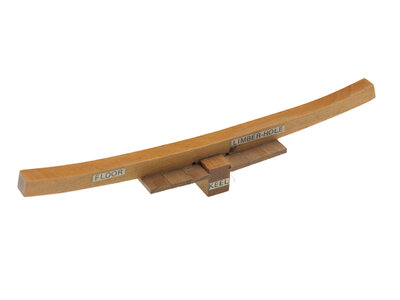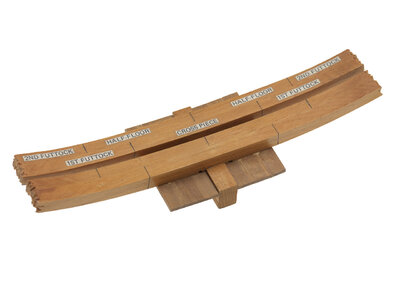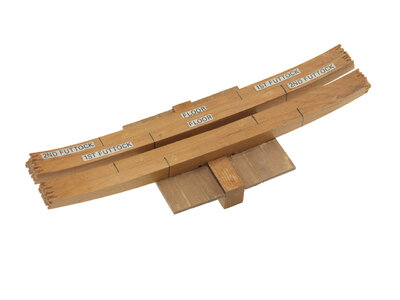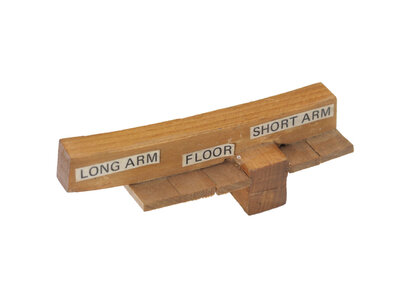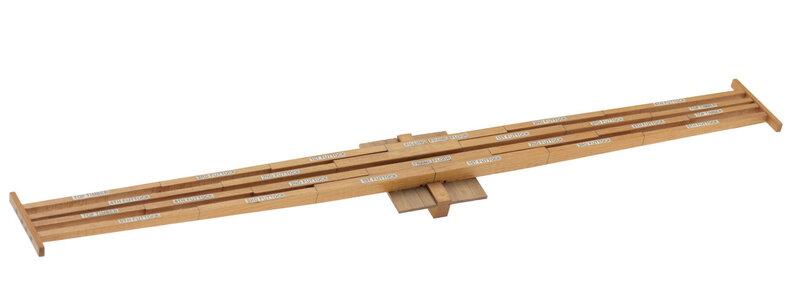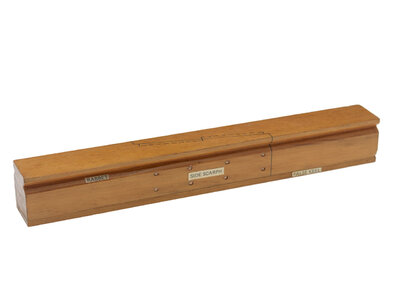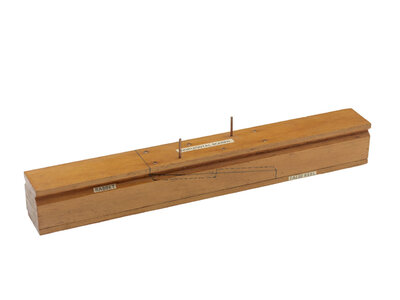We know James Lees usually as the author of one of important publication about rigging like The Masting and Rigging of English Ships of War: 1625–1860
In addition, Lees (often referred to as "Jim") had a passion for ship modelling, leading him to construct and restore many models of historic vessels. Many of these are displayed across the world, most notably at the collection of the National Maritime Museum, of which Lees was curator and Senior Conservation Officer. His expertise on model restoration was utilised on items in "The Tradescant Collection", held at the Ashmolean Museum, University of Oxford.
 en.wikipedia.org
en.wikipedia.org
In the years 1977 / 78 Lees made some small but very informative Composite models showing the different frame combinations on top of the keel, mainly to explain the work innovations prepared by Robert Seppings as naval architect and later Surveyor of the Navy.
"partial strength produces general weakness"

 en.wikipedia.org
en.wikipedia.org
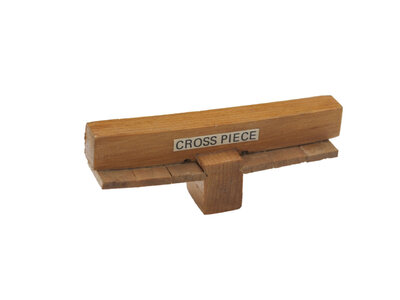
The model is made entirely in wood which has been varnished. It has been annotated with a printed paper label marked 'Cross piece'. The cross piece is attached to a short piece of keel and two short sections of planking on either side of it.
 www.rmg.co.uk
www.rmg.co.uk
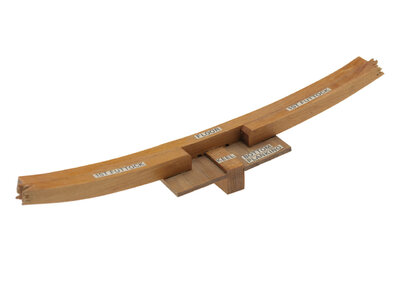
The model is made entirely in wood which has been varnished. The component parts are annotated with paper labels marked 'Floor', 'Keel', 'Bottom planking' and '1st futtock' (twice). The model depicts part of a single frame and the two sections of first futtocks are depicted with stylised breaks at their ends. The frame is attached to a short section of keel and two short sections of planking are either side of it. The model depicts merchant rather than naval construction. There is no cross-chock uniting the first futtocks, and the limber channel runs just above the garboard planks. There are limber notches cut on the lower side of the floor to enable water to drain along the channel.
 www.rmg.co.uk
www.rmg.co.uk
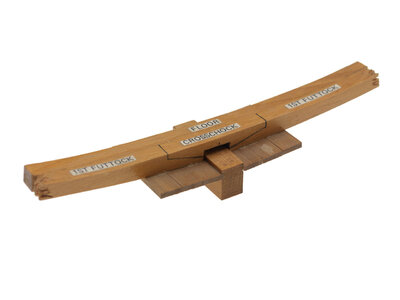
The model is made entirely of wood. The crosschock is indicated by a drawn line on the model. The two first futtocks are shown with a stylised break at each end. The bottom of the keel has a hole in its centre for fixing to a baseboard. The upper face of the model has four paper labels applied to it marked 'Floor', 'Crosschock' and '1st futtock' (twice). This model shows typical naval construction. Note the gap seen above the keel. This would be occupied by the rising wood, which has been omitted from this model.
 www.rmg.co.uk
www.rmg.co.uk
some more you will find in the following posts .....
In addition, Lees (often referred to as "Jim") had a passion for ship modelling, leading him to construct and restore many models of historic vessels. Many of these are displayed across the world, most notably at the collection of the National Maritime Museum, of which Lees was curator and Senior Conservation Officer. His expertise on model restoration was utilised on items in "The Tradescant Collection", held at the Ashmolean Museum, University of Oxford.
James Lees - Wikipedia
In the years 1977 / 78 Lees made some small but very informative Composite models showing the different frame combinations on top of the keel, mainly to explain the work innovations prepared by Robert Seppings as naval architect and later Surveyor of the Navy.
"partial strength produces general weakness"

Robert Seppings - Wikipedia

Component model; Frame model
A frame model depicting a cross piece floor (1813-1822).The model is made entirely in wood which has been varnished. It has been annotated with a printed paper label marked 'Cross piece'. The cross piece is attached to a short piece of keel and two short sections of planking on either side of it.
Component model; Frame model | Royal Museums Greenwich

Component model; Frame model
A frame model depicting a futtock floor (pre 1814).The model is made entirely in wood which has been varnished. The component parts are annotated with paper labels marked 'Floor', 'Keel', 'Bottom planking' and '1st futtock' (twice). The model depicts part of a single frame and the two sections of first futtocks are depicted with stylised breaks at their ends. The frame is attached to a short section of keel and two short sections of planking are either side of it. The model depicts merchant rather than naval construction. There is no cross-chock uniting the first futtocks, and the limber channel runs just above the garboard planks. There are limber notches cut on the lower side of the floor to enable water to drain along the channel.
Component model; Frame model | Royal Museums Greenwich

Component model; Frame model
A frame model depicting a futtock floor (pre 1814).The model is made entirely of wood. The crosschock is indicated by a drawn line on the model. The two first futtocks are shown with a stylised break at each end. The bottom of the keel has a hole in its centre for fixing to a baseboard. The upper face of the model has four paper labels applied to it marked 'Floor', 'Crosschock' and '1st futtock' (twice). This model shows typical naval construction. Note the gap seen above the keel. This would be occupied by the rising wood, which has been omitted from this model.
Component model; Frame model | Royal Museums Greenwich
some more you will find in the following posts .....


